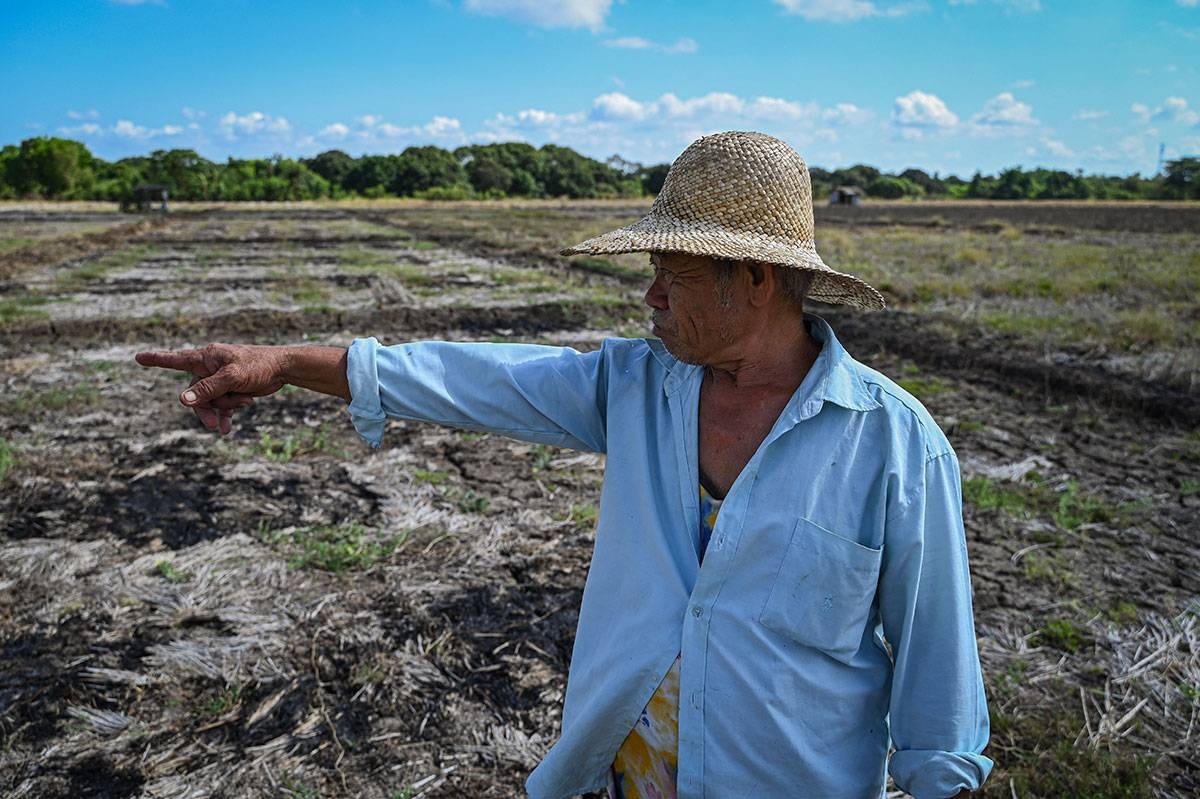
PRESIDENT Ferdinand Marcos Jr. assured workers in the agricultural sector and other industries heavily affected by the El Niño phenomenon that the government is ready to assist them to weather the effects of the dry spell.
The promise of help came as the Department of Agriculture (DA) put the agricultural damage caused by the El Niño phenomenon at P5.9 billion, with drought affecting 113,585 farmers and fisherfolk in 12 regions.
The President said the government assistance, which was part of the ongoing program of the DA, the Department of Social Welfare and Development (DSWD), and the Department of Labor and Employment, would "soon" be provided to the affected workers.
"In the coming days, we will extend financial assistance to those hard hit by El Niño in the country — those whose crops and livelihood are damaged because of drought," Marcos said in his speech during the Labor Day event in Malacañang on Wednesday.
The government would prioritize helping those affected in Mindanao, he added.
As of May 1, the DSWD said there were 2.97 million persons or 695,149 persons from 3,905 barangay (villages) in 13 regions affected by El Niño.
The DSWD also said P97.275 million worth of family food packs and nonfood relief items have been distributed to affected areas in Regions 1 (Ilocos), 2 (Cagayan Valley), 3 (Central Luzon), 4B (Mimaropa), 5 (Bicol), 6 (Western Visayas), 7 (Central Visayas), 8 (Eastern Visayas), 9 (Zamboanga Peninsula), 11 (Davao), 12 (Soccsksargen), Cordillera Administrative Region (CAR), and the Bangsamoro Autonomous Region in Muslim Mindanao (BARMM).
In its latest El Niño bulletin, the DA said the estimated damage to the farm sector in 11 regions — CAR, Ilocos Region, Cagayan Valley, Central Luzon, Calabarzon, Mimaropa, Bicol Region, Western Visayas, Zamboanga Peninsula, Davao Region, and Soccsksargen — stood at P3.94 billion, affecting 73,713 farmers and fisherfolk as of April 16.
A total of 66,065 hectares of farmlands were affected by El Niño. Of this number, 76.87 percent or 50,785 hectares have a chance of recovery, while 23.13 percent, or 15,281 hectares, have no chance of recovery.
The DA said it has distributed assistance totaling P1.09 billion to affected farmers and fisherfolk, including support for production, financial and livelihood assistance, and water management.
"As support to production, high-value crops with lower water requirements were distributed to farmers in Western Visayas amounting to P2.05 million," it said.
The DA said it provided hybrid rice seeds worth P7.87 million and fertilizers worth P7.63 million to non-vulnerable areas in Western Visayas; rice and corn seeds worth P3.51 million in Ilocos Region to maximize production and compensate for incurred losses; and drugs, biologics, and high-density polyethylene hoses worth P840,000 million in CAR.
For financial and livelihood assistance, the DA said it has provided a total of 60,013 native animals to 334 groups and 534 individual farmers nationwide through its Philippine Native Animal Development Program.
"In addition, the Rice Farmers Financial Assistance program has provided financial assistance to 139,002 farmers in Cagayan Valley with a total amount of P701.96 million, and 71,795 farmers in Mimaropa region with a total amount of P362.56 million," the DA said.
The Bureau of Fisheries and Aquatic Resources has provided a total of 111 diversified alternative livelihoods and technologies in Cordillera, Bicol, Central Visayas, and Zamboanga Peninsula regions to help fishermen, it added.
The crop areas affected by El Niño rose to 104,402 hectares, with 72.67 percent of land still potentially recoverable. Production loss, meanwhile, was estimated at 184,002 metric tons (MT).
Of this, 129,350 MT was rice or around 1.40 percent of the target production of 9,218,358.28 MT this year. On the other hand, 98,937 MT was recorded to have been lost for corn, and 26,826 MT were recorded for high-value crops.
Mimaropa, which posted the largest loss in terms of value at P1.7 billion, received P460 million in assistance, including rice machinery, loans coconut seedlings, composting facilities, irrigation projects, and marine equipment.
Last week, President Ferdinand Marcos Jr. and Agriculture Secretary Francisco Tiu Laurel Jr. led the inspection of farmlands affected by the drought in Occidental Mindoro.
According to the DA, five towns in Mindoro have recently been declared under a state of calamity as a result of the dry spell. This includes Mansalay and Bulalacao in Oriental Mindoro, and Looc, Magsaysay, and San Jose in Occidental Mindoro.
Moreover, the DA said that cloud seeding operations are ongoing in southern Cagayan, northern Isabela, Quirino corn areas, and Magat Reservoir in Cagayan Valley.
To enhance water supply, the government has also installed 616 water pumps in seven regions, including Ilocos Region, Cagayan, Central Luzon, Mimaropa, Western and Central Visayas, and Davao Region.
The National Disaster Risk Reduction and Management Council, meanwhile, said P541 million in aid — consisting of food packs, rice, roofing sheets, generators and hygiene kits — has been disbursed to at least 10 regions severely affected by the El Niño phenomenon.
These regions were Cagayan Valley, Mimaropa, Bicol, Western Visayas, Central Visayas, Eastern Visayas, Zamboanga Peninsula, Soccsksargen, Bangsamoro Autonomous Region in Muslim Mindanao, and the Cordillera Administrative Region.
The Philippine Atmospheric, Geophysical and Astronomical Services Administration said the El Niño phenomenon remains active and is expected to persist until this month.
At least 131 cities and municipalities across the country have declared a state of calamity due to the effects of the El Niño phenomenon, as most of the areas are experiencing drought.
Read The Rest at :









